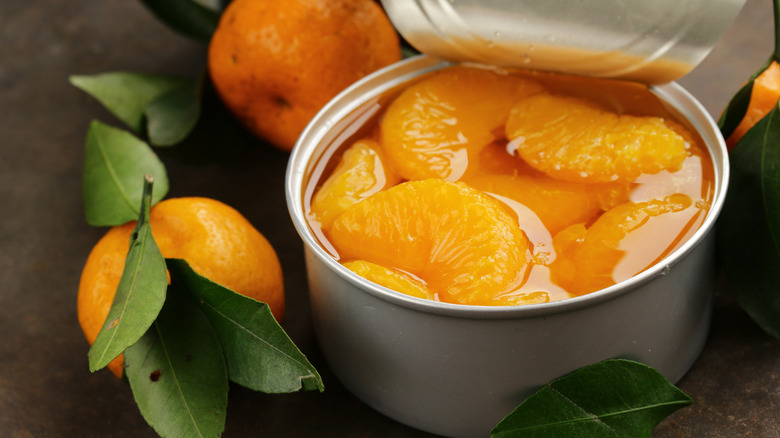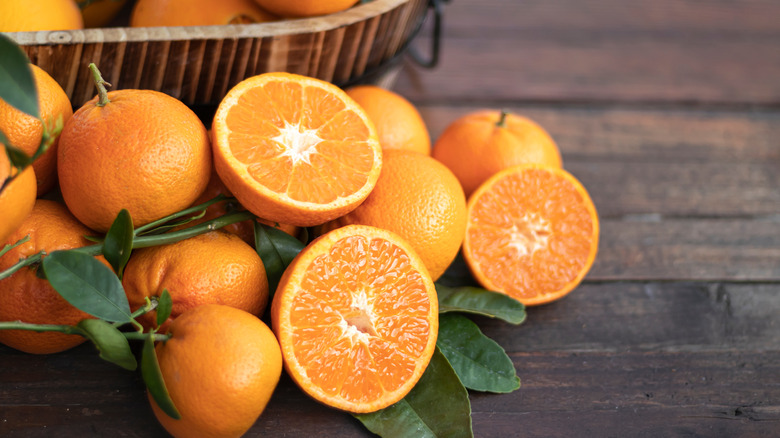Is There A Best Type Of Orange For Canning?
Canning is a useful practice — if not to use, then at least to understand. Britannica states that canning was an incredibly important invention created by Frenchman Nicolas Appert in 1809 when his government was struggling to feed its navy. Appert attempted to preserve food by sealing it in a jar and heating the container. Canning works because the prolonged exposure to heat forces air out of the jar, closing it in a kind of vacuum seal, per Ohioline. This process keeps the food from spoiling and preserves it. Today, much of the food we grab from the grocery store is canned or jarred and wouldn't be available without the efforts of Mr. Appert.
Some items are better for canning than others, especially from a safety perspective. According to Vitamix, generally speaking, the best foods for canning are those already naturally high in acidity because acidity reduces the chance of bacteria becoming a problem. That means fruit! Larger, hardy fruits are best for canning whereas small, soft fruits are better for making into jams. Items like apples and peaches are both great canning candidates, as is the sweet yet acidic orange.
High in Acidity
Oranges are one of the best fruits to can because, like lemons and limes, they are citrus fruits and have quite a bit of natural acidity to them. Practical Self Reliance claims that oranges in particular are a fantastic choice for water bath canning. A majority of orange varieties are perfectly suitable for canning, but it is recommended that larger kinds of fruit, like navel oranges, should be segmented for ease of canning whereas the smaller oranges should be peeled and canned whole.
Common Sense Home recommends using clementines since they are easy to deconstruct and separate from the white, bitter pith. If you choose to use mandarin oranges, which are also quite a popular option, Simply Canning says that 10 whole oranges equate to making about four half-pint jars and that 40 mandarin oranges make four quart-sized jars.
Clementine, navel, mandarin, and tangerine oranges are all optimal choices for a canning endeavor. However, North Dakota State University does warn that if the fruit you're canning has a pH above 4.6, acid must be added to the canning process to lower the pH so that bacteria doesn't grow. If you are unsure if your food is acidic enough, Healthy Canning suggests using paper pH strips, aka litmus paper, to measure pH. The paper will change color to indicate a specific pH level, and if you are planning on canning regularly in the future, they might be a good investment to make.

